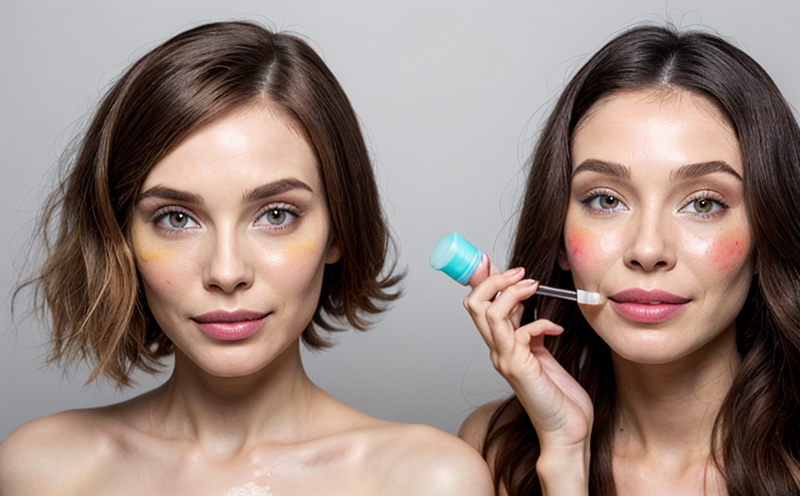UVA/UVB Protection Testing in Organic Cosmetic Products
In today's market, organic and natural cosmetic products are increasingly sought after by consumers who prioritize environmental sustainability and health. Ensuring that these products meet the necessary standards for UVA/UVB protection is crucial not only to comply with regulatory requirements but also to build consumer trust.
The sun emits a broad spectrum of ultraviolet (UV) radiation, which can cause skin damage leading to conditions such as premature aging and an increased risk of skin cancer. Organic cosmetic products, by definition, must be free from synthetic chemicals and artificial preservatives, making them more vulnerable to UV-induced degradation compared to conventional formulations.
UVA/UVB protection testing is a critical component in the development process for organic cosmetics. This ensures that the product can effectively shield consumers against both UVA (longer wavelength) and UVB (shorter wavelength) rays, thereby protecting their skin from harmful effects of sunlight exposure. The effectiveness of this protection is typically measured using standard methods such as those defined by ISO 21365 for sunscreen products.
The testing process involves several key steps: sample preparation, application on a standardized substrate (often human skin or artificial models), and measurement under controlled light sources that simulate natural sunlight. The goal is to determine the SPF value of the product, which indicates its ability to block UVB rays, as well as any potential UVA protection provided.
Accurate testing requires precise instrumentation capable of simulating real-world conditions accurately. For instance, solar simulators equipped with broadband light sources can mimic both UVA and UVB radiation effectively. These devices are calibrated according to international standards such as ASTM D4035 or EN 967-1.
Once testing is complete, the results need to be analyzed thoroughly before any claims about SPF values or broad-spectrum protection can be made on labels or marketing materials. Compliance with regulatory bodies like the European Commission’s Cosmetics Regulation and the U.S. Food and Drug Administration (FDA) guidelines ensures that products are safe for consumers while maintaining their efficacy.
By conducting rigorous UVA/UVB protection tests, manufacturers can enhance product performance and consumer safety, ultimately contributing to a more responsible and sustainable beauty industry.
Benefits
- Regulatory Compliance: Ensures that organic cosmetic products meet stringent UVA/UVB protection standards set by regulatory bodies worldwide.
- Consumer Trust: Builds confidence among consumers regarding the safety and effectiveness of their skincare choices, especially those looking for natural alternatives.
- Innovation: Encourages continuous improvement in formulation techniques to enhance both UVA and UVB protection levels within organic products.
- Healthier Skin: By providing effective UVA/UVB protection, these tests help prevent premature aging and reduce the risk of skin cancer associated with prolonged sun exposure.
- Eco-friendly Practices: Promotes use of organic ingredients that are less harmful to the environment compared to synthetic counterparts used in traditional cosmetics.
Quality and Reliability Assurance
- Precision Calibration: All testing equipment is regularly calibrated against international standards like ISO 17025 to ensure accurate results.
- Repeatability: Multiple trials are conducted under identical conditions to verify consistency and reliability of the test outcomes.
The quality assurance process includes rigorous validation procedures that involve comparing our findings with those obtained from other reputable laboratories. This ensures that we consistently deliver accurate, reliable data which forms the basis for informed decision-making by your organization.
Environmental and Sustainability Contributions
The use of natural and organic ingredients in cosmetic products aligns closely with broader environmental sustainability goals. By ensuring that these products undergo thorough UVA/UVB protection testing, we contribute to reducing reliance on harmful chemicals found in conventional cosmetics.
This approach supports the circular economy by encouraging sustainable practices throughout the supply chain—from sourcing raw materials sustainably to proper disposal of used containers after their lifecycle ends. Additionally, supporting organic farming methods helps preserve biodiversity and promote healthier ecosystems.





